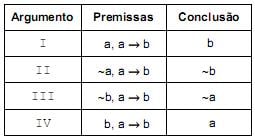Questões de Concurso
Para agente fiscal de tributos estaduais
Foram encontradas 381 questões
Resolva questões gratuitamente!
Junte-se a mais de 4 milhões de concurseiros!
Avoidance and evasion compared: The United States example
The use of the terms tax avoidance and tax evasion can vary depending on the jurisdiction. In the United States, for example, the term "tax evasion" (or, more precisely, "attempted tax evasion") generally consists of criminal conduct, the purpose of which is to avoid the assessment or payment of a tax that is already legally owed at the time of the criminal conduct. (The term "assessment" is here used in the technical sense of a statutory assessment: the formal administrative act of a duly appointed employee of the Internal Revenue Service who records the tax on the books of the United States Treasury after certain administrative prerequisites have been met. In the case of Federal income tax, this act generally occurs after the close of the tax year - and usually after a tax return has been filed.)
By contrast, the term "tax avoidance" is used in the United States to describe lawful conduct, the purpose of which is to avoid the creation of a tax liability. Tax evasion involves breaking the law; tax avoidance is using legal means to avoid owing tax in the first place. An evaded tax remains a tax legally owed. An avoided tax (in the U.S. sense) is a tax liability that has never existed. A simple example of tax avoidance in this sense is the situation where a business considers selling a particular asset at a huge gain but, after consulting with a tax adviser, decides not to [VERB] the sale. ......97...... no sale occurs, no gain is realized. The additional income tax liability that [TO GENERATE] by the inclusion of the gain on the sale in the computation of taxable income is simply not incurred, as there was no sale and no realized gain.
(Adapted from Wikipedia: en.w ikipedia.org/w iki/Tax_evasion)
Para todo x de U considere válidas as premissas seguintes:
• P(x)
• Q(x)
• [ R(x) → S(x)] → T(x)
• [ P(x) ∧ Q(x) ∧ R(x)] → S(x)
É verdade que
• v o número de aprovados em pelo menos uma das três disciplinas;
• w o n úmero de aprovados em pelo menos duas das três disciplinas;
• x o número de aprovados em uma e uma só das três disciplinas;
• y o número de aprovados em duas e somente duas das três disciplinas;
• z o número dos que não foram aprovados em qualquer uma das três disciplinas.
Os valores de v, w , x, y, z são, respectivamente,

Indicando-se os argumentos legítimos por L e os ilegítimos por I, obtêm-se, na ordem dada,
 e a sentença B: “Se o espaço
e a sentença B: “Se o espaço  for ocupado por uma ( I ), a sentença A será uma ( II ) ”.
for ocupado por uma ( I ), a sentença A será uma ( II ) ”.A sentença B se tornará verdadeira se I e II forem substituídos, respectivamente, por